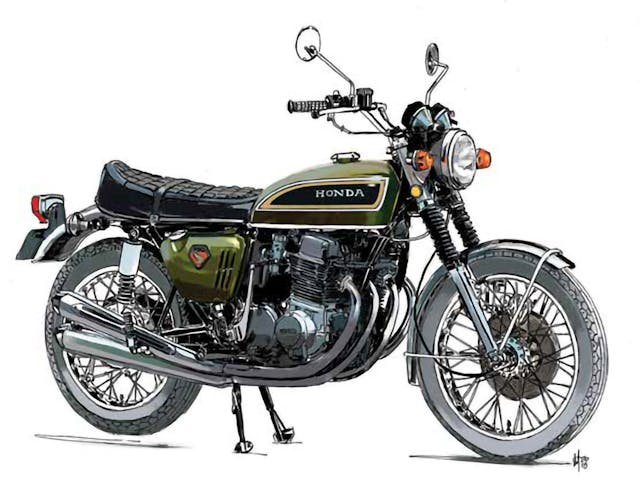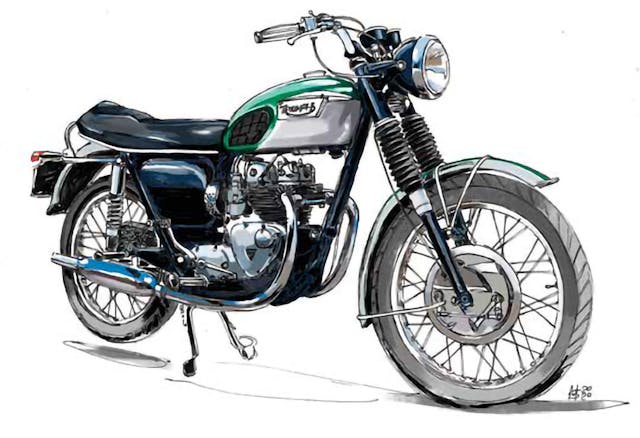3 midsize street bikes that won’t break the bank
In the car universe, some collectibles are reliably magnetic. Wheel up to a concours, Sunday’s cars and coffee, or any other gearhead gathering in an early Sting Ray, an E-Type, or a vintage “patina pickup” and you’ll immediately find appreciation and friendship thanks to your ride.
Well, motorcycling hosts the same dynamic. In between heavies like Vincents and innumerable small-displacement Japanese bikes exists a nice selection of blue chips that are affordable, fun to ride, and beautiful—and they will always pass peer review among real bike folk. Here are three favorites you can typically find in ridable condition for $6000 or less.
1969–73 BMW R75/5

Engine 745cc 4-stroke OHV opposed twin
Gearbox 4-speed
Weight 463 lb
Top speed 109 mph
Related models R50/5, R60/5, R75/6, R90/6
Price when new $2095
Hagerty #3 value $4000–$5000
Except for its race bikes, BMW’s boxers had a slowpoke reputation from 1923 until the 1973 R90S debuted. Built for practicality, the flat twins seemingly eschewed performance as unbecoming. And so, although born in the superbike era, the R75/5 isn’t one; instead, it’s endearingly conflicted. The 745cc engine coughs rather than roars to life, and the opposed cylinders and longitudinal crankshaft rock the chassis, metronome-like, at idle. More polarities: The torque curve is wider than the Rhine; the gearbox can shift either clunkily or smoothly; the suspension offers luxurious travel; and shaft drive makes the R75/5 leap like a breaching whale when you throttle up. But the ride! Capable of 1000-mile days, the R75/5 delivers nearly vibration-free touring. Chrome-sided ’70s “toaster tank” models are now iconic.
1969–76 Honda CB750 Four

Engine 736cc 4-stroke SOHC inline four
Gearbox 5-speed
Weight 518 lb
Top speed 123 mph
Related models CB750F, CB750A, CB750K
Price when new $1495
Hagerty #3 value $4200–$6000
This bike changed everything. The Honda 750 Four held the rare distinction of merging huge engineering advances with rampant performance and affordability thanks to its high production volume. The SOHC 736cc four-cylinder superbike hit America in 1969, thumping Harley-Davidson and British bike makers in the process. What made the CB750 special? Four gorgeous cylinders making a snarling 67 horsepower, four sweeping chromed megaphone exhausts, four carburetors, crisp styling, big gauges, glitch-free electrics, easy starting, a hydraulic front disc brake, and no oil leaks. It was all there, it was all Honda, and it was alright, man. Most valuable are the 1969 units with sandcast engine cases; for peak affordability, look for 1973–74 examples.
1954–73 Triumph T100 Tiger

Engine 498cc 4-stroke OHV parallel twin
Gearbox 4-speed
Weight 419 lb
Top speed 105 mph
Related models Speed Twin, Tiger Daytona, TR5 Trophy
Price when new $1199
Hagerty #3 value $4500–$6000
Launched in 1937 as the Speed Twin, Triumph’s pushrod parallel twin saw war and peace, played movie roles in 1953’s The Wild One and 1963’s The Great Escape, and permeated literature as Jupiter’s Travels author Ted Simon circled the globe. The genial 498cc OHV Tiger embodies the golden era of British bikes. It adopted modern swing-arm rear suspension in 1954, and in 1960, Triumph unitized the engine and transmission to strengthen the power-train. Today, a sweet spot for affordable Triumph twins is the twin-carb 1969–73 T100 Tiger Daytona. Easy to start, simple to work on (in an English sort of way), culturally relevant, and impeccably styled, it’s like a Savile Row suit—always in style.

